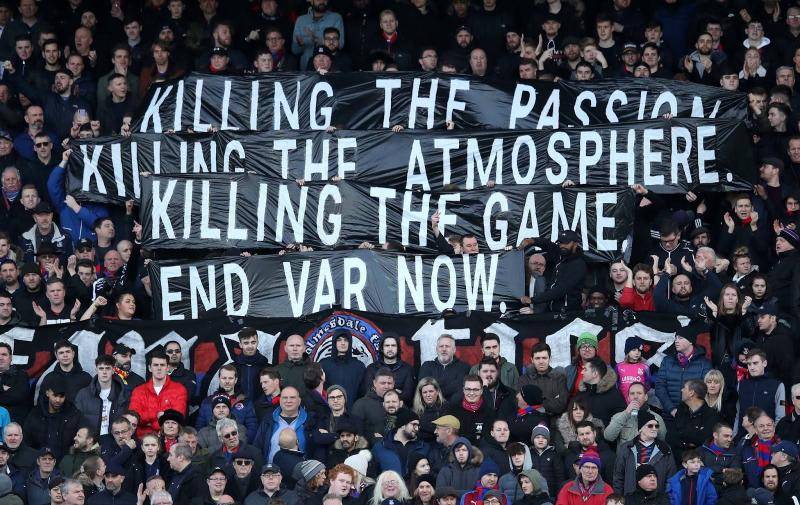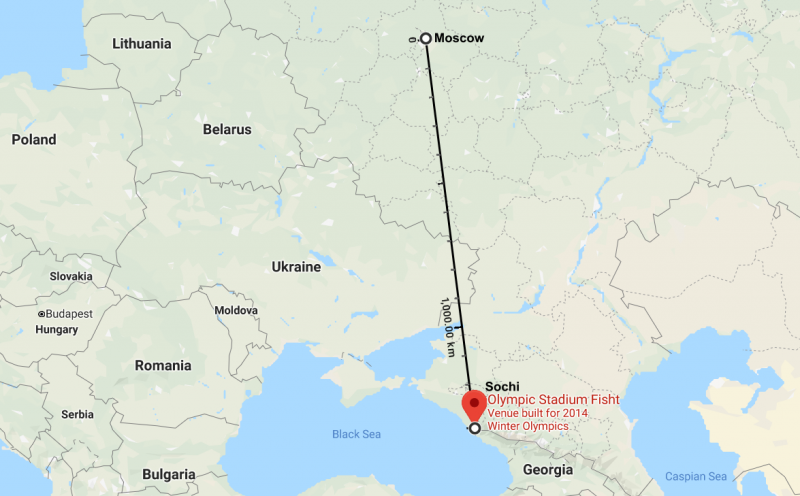
To say that the video assistant referee (VAR) has not been well-received would be an understatement.
Despite the use of VARs having been written into Law in 2018, there have been some glaring hiccups in the rollout of what many fans are saying will irreversibly change the nature of the game we love. So here’s the Football Tribe take on the technological revolution that is the VAR.
Robots are taking all our jobs and making football less awesome
The automation of any field is almost never welcomed, and in football, the feedback has been largely negative. It seems as though no one but the head honchos at the International Football Association Board (IFAB) and FIFA have any kind words for the VAR.

Fans, club staff, and the players themselves, everyone seems to hate it. Even referees, who have been largely silent on the matter, must admit that while VAR at least shares some of the blame for bad calls on the pitch, it also takes some of the art out of the distinguished role that is the traditional football arbiter.
The robots are not taking all the refereeing jobs
Contrary to popular belief, the VAR is not some faceless robot that, through the machinations of its human flunkies at FIFA, has become the unseen overlord of football referees. Think less Skynet and more ESPN on steroids.

The implementation of VAR at any tournament looks more like an upgrade to the broadcast and video production aspects of professional football than Gianni Infantino handing Megatron the keys to FIFA’s offices in Zürich.

The mundane reality
Despite all the hype, artificial intelligence is a very long way off from running our lives, let alone our football matches. Remember IBM’s Watson? Its arrival was heralded as the beginning of a new age in the medical profession, but then it started giving lethal treatment advice. A slew of big and expensive chatbot projects went the same way after their various shortcomings became obvious.
The boring truth is that when VAR rolls out at a tournament, it entails an array of ultra-high-definition and slow-motion cameras, some hefty video processing hardware, and seated in the video operations room (VOR), a team of real-life humans with the necessary know-how to sequence video from different angles and assist referees on the pitch in making or checking decisions.

Hidden from public view as it is, FIFA correctly predicted that the VAR might appear nefarious to ordinary fans.
To head off concerns of automation, FIFA and suppliers of VAR systems (such as EVS) included a visible component of the VAR in the Referee Review Area (RRA), where referees can be seen consulting instant replays of various angles at a VAR terminal—all in full view of fans (and without direction from their robot overlords).

VAR’s creators knew it would be a touchy subject
Conceived by the Royal Netherlands Football Association (KNVB) after their successes with goal-line technology, the VAR was intended as a solution to minimize controversial decisions being made on the pitch. It was merely a dedicated effort to bring some semblance of reliability and uniformity to the adjudication of football matches.
Resistance to the idea remained until the exit of the Luddite Sepp Blatter made room for the more progressive Gianni Infantino. Then FIFA signed off on the VAR—declaring that it should remain a factor of “minimum interference and maximum benefit” and codifying into Law its use in deliberations around what they termed “clear and obvious errors”.
As a result of VAR’s implementation, the game has maybe changed—but only a little bit.
Despite all that intention and effort applied to foolproofing the decision-making process of referees, the involvement of VAR in football matches is still loosely implemented—and still not appreciated by fans.
Referees remain free to apply their own discretion when deciding whether to consult or ignore VAR recommendations. The VAR team in the VOR could be consulted at any time through the referee’s headphones and the referee could personally get a look at instant replays through the pitch-side RRA.
But because the review process is still mostly manual, any time there’s a call by the referee to consult the VAR, the ball comes out of play and there’s a discernible break in the mood and pace of the match.

And that’s if everything works as expected.
As with most forms of change, there have been some growing pains. In January 2020, a Premier League match between Watford and Tottenham lost a minute and a half of play to technical difficulties with the VAR. Even though the issue of a headset with a flat battery would likely have occurred even prior to VAR’s arrival, the resulting stoppage of play would not have been as likely before.
Spurs fans singing: “It’s not Football anymore!”
As was the case during the 2018 World Cup group stage match between Spain and Portugal in Sochi, the VOR could be hundreds of kilometres away from the action.
1,356 kilometres away, to be exact.

Despite the careful rollout, there have been some controversial decisions.
There have been technical difficulties, missed fouls, inconsistent rulings, and even instances when a crucial camera angle was obstructed by a flag. But the VAR is credited with making the 2018 FIFA World Cup the cleanest since 1986. Putting aside the amount of time taken for the average of seven VAR consultations per match, the accuracy of referee decisions rose from 95% without VAR to 99.3% with it.
A record number of penalties were awarded with VAR being implemented during the 2018 FIFA World Cup, resulting in 22 goals from 29 penalties awarded out of the total of 169 goals scored during the tournament (that’s 13%), breaking the 20-year record from the one in 1998, when just 17 out of 171 goals scored (just under 10%) were from spot-kicks.


The greater number of penalties and yellow cards handed out, combined with the lower number of red cards shown, seem to indicate that the VAR had an effect of keeping both players and referees in line—as though it was removing emotion from crucial decisions.
The Outcome
Imagine what could happen: the game could be distilled to its purest form, we could finally have an unsullied competition of skills, tactics, and strategy; leagues struggling with corruption could get cleaned up and regain their credibility; we’d have an emotionless and immortal being to pour our vitriol on when there’s a bad call. We just need to get those kinks ironed out first.
What say you? Does the VAR get an aye or nay? Would the removal of the human element from refereeing improve or degrade the game?
Kevin Eichenberger reckons everything from driving to political correctness should be regulated by artificial intelligence.

